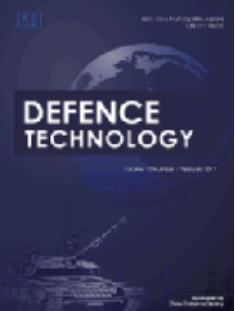基于后退水平优化的无人机规避机动诱导碰撞方法
IF 5.9
Q1 ENGINEERING, MULTIDISCIPLINARY
引用次数: 0
摘要
针对复杂障碍物环境下无人机的导弹避碰问题,提出了一种基于后退视界优化的避碰方法。该方法为无人机生成特定弹道,有效诱导比例导航导弹成功拦截障碍物,从而完成规避机动。将避碰机动分为两个阶段,即碰撞诱导阶段和快速离开阶段。采用基于障碍势场的目标选择算法识别最合适的目标障碍物,结合后退水平优化和hp-自适应伪谱法确定诱导轨迹。在三种不同类型障碍物环境和一种多障碍物环境下进行了仿真实验,仿真结果表明,本文提出的方法大大提高了无人机规避机动的成功率,证明了该方法的有效性。本文章由计算机程序翻译,如有差异,请以英文原文为准。
Collision-inducing method for UAV evasive maneuvers based on receding horizon optimization
Aiming at the missile avoidance problem of the unmanned aerial vehicle (UAV) in complex obstacle environments, this work proposes a collision-avoidance method based on receding horizon optimization. The proposed method generated a specific trajectory for the UAV to effectively induce the proportional navigation missile to successfully intercept the obstacle, thereby accomplishing the evasive maneuver. The evasive maneuver was divided into two distinct stages, namely the collision-inducing phase and the fast departure phase. The obstacle potential field-based target selection algorithm was employed to identify the most appropriate target obstacle, while the induced trajectory was determined through a combination of receding horizon optimization and the hp-adaptive pseudo-spectral method. Simulation experiments were carried out under three different types of obstacle environments and one multi-obstacle environment, and the simulation results show that the method proposed in this paper greatly improves the success rate of UAV evasive maneuvers, proving the effectiveness of this method.
求助全文
通过发布文献求助,成功后即可免费获取论文全文。
去求助
来源期刊

Defence Technology(防务技术)
Mechanical Engineering, Control and Systems Engineering, Industrial and Manufacturing Engineering
CiteScore
8.70
自引率
0.00%
发文量
728
审稿时长
25 days
期刊介绍:
Defence Technology, a peer reviewed journal, is published monthly and aims to become the best international academic exchange platform for the research related to defence technology. It publishes original research papers having direct bearing on defence, with a balanced coverage on analytical, experimental, numerical simulation and applied investigations. It covers various disciplines of science, technology and engineering.
 求助内容:
求助内容: 应助结果提醒方式:
应助结果提醒方式:


